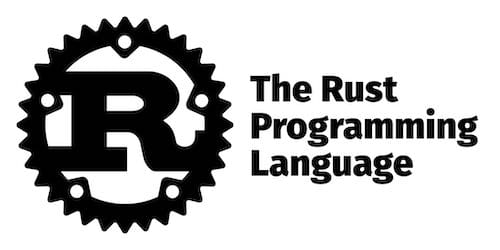How To Install Rust on CentOS Stream 10

Rust, a modern systems programming language, has gained significant traction in recent years due to its focus on safety, concurrency, and performance. For developers using CentOS Stream 10, installing Rust opens up a world of possibilities for building robust and efficient applications. This comprehensive guide will walk you through the process of installing Rust on CentOS Stream 10, ensuring you have a solid foundation for your Rust development journey.
Prerequisites
Before diving into the installation process, it’s crucial to ensure your system meets the necessary requirements. CentOS Stream 10, being a cutting-edge distribution, provides an excellent platform for Rust development. Here’s what you’ll need:
- A CentOS Stream 10 system with at least 2GB of RAM and 10GB of free disk space
- Root access or sudo privileges
- A stable internet connection for downloading packages
- Basic familiarity with terminal commands
To prepare your system, open a terminal and update your package manager:
sudo dnf update -yNext, install essential development tools:
sudo dnf groupinstall "Development Tools" -y
sudo dnf install gcc openssl-devel -yInstallation Methods Overview
There are several ways to install Rust on CentOS Stream 10, each with its own advantages. We’ll explore the following methods:
- Rustup (recommended)
- Package manager installation
- Standalone installer
The Rustup method is highly recommended as it provides the most flexibility and ease of use for managing Rust installations.
Installing Rust Using Rustup
Rustup is the official Rust toolchain installer. It allows you to easily install, update, and manage multiple Rust versions. Follow these steps to install Rust using Rustup:
1. Install curl
First, ensure that curl is installed on your system:
sudo dnf install curl -y2. Download and run the Rustup installer
Execute the following command to download and run the Rustup installer script:
curl --proto '=https' --tlsv1.2 -sSf https://sh.rustup.rs | shThis command will download the installer and start the installation process. You’ll be presented with installation options. For most users, the default option (1) is suitable.
3. Configure environment variables
After the installation completes, you’ll need to configure your current shell to use Rust. Run:
source $HOME/.cargo/envTo make this change permanent, add the following line to your ~/.bashrc or ~/.bash_profile file:
export PATH="$HOME/.cargo/bin:$PATH"4. Verify the installation
To ensure Rust was installed correctly, check the version:
rustc --version
cargo --versionIf you see version numbers for both rustc and cargo, congratulations! Rust is now installed on your CentOS Stream 10 system.
5. Install additional components
Rustup allows you to install additional components. For example, to install the Rust source code for offline documentation, run:
rustup component add rust-srcAlternative Installation Methods
While Rustup is the recommended method, there are alternative ways to install Rust on CentOS Stream 10:
Using DNF Package Manager
CentOS Stream 10 repositories may include Rust packages. To install using DNF:
sudo dnf install rust cargo -yNote that this method may not provide the latest Rust version and lacks the flexibility of Rustup.
Installing from Source
For advanced users who need specific configurations, installing from source is an option:
- Clone the Rust repository:
git clone https://github.com/rust-lang/rust.git - Navigate to the rust directory:
cd rust - Configure and build:
./configure make sudo make install
This method requires more time and system resources but offers maximum control over the installation process.
Offline Installation
For systems without internet access, you can download the standalone installer from the official Rust website and transfer it to your CentOS Stream 10 machine. Execute the installer using:
sh rustc-1.xx.0-x86_64-unknown-linux-gnu.shReplace “1.xx.0” with the actual version number of your downloaded installer.
Post-Installation Setup
After installing Rust, there are several steps you can take to optimize your development environment:
Configuring PATH Variables
Ensure your PATH includes Rust binaries by adding the following to your ~/.bashrc:
export PATH="$HOME/.cargo/bin:$PATH"Setting Up Development Environment
Install a code editor or IDE with Rust support. Popular choices include:
- Visual Studio Code with the “Rust” extension
- IntelliJ IDEA with the “Rust” plugin
- Vim with rust.vim plugin
Installing Recommended Tools
Enhance your Rust development workflow with these tools:
cargo install clippy # Linter
cargo install rustfmt # Code formatter
cargo install cargo-edit # Dependency managementCreating Your First Rust Project
Let’s create a simple “Hello, World!” program to verify your Rust installation:
- Create a new project directory:
mkdir hello_rust cd hello_rust - Initialize a new Rust project:
cargo init - Open src/main.rs in your preferred editor and replace its contents with:
fn main() { println!("Hello, CentOS Stream 10!"); } - Build and run your project:
cargo run
You should see “Hello, CentOS Stream 10!” printed to your console.
Managing Rust Installation
Rustup makes it easy to manage your Rust installation:
Updating Rust
To update to the latest Rust version:
rustup updateInstalling Multiple Toolchains
You can install and switch between different Rust versions:
rustup install nightly
rustup default nightlyManaging Components
Add or remove components as needed:
rustup component add rust-analyzer
rustup component remove rust-docsUninstalling Rust
If you need to remove Rust from your system:
rustup self uninstallTroubleshooting Common Issues
Even with a smooth installation, you might encounter some issues. Here are solutions to common problems:
Permission Problems
If you encounter permission errors, ensure you have the necessary rights to install software. Use sudo when required, but avoid running cargo with sudo.
Compilation Errors
If you face compilation errors, check that you have the latest Rust version and all necessary dependencies installed. Update your system and Rust installation:
sudo dnf update -y
rustup updatePath-related Issues
If Rust commands are not recognized, verify that ~/.cargo/bin is in your PATH. You can add it temporarily with:
export PATH="$HOME/.cargo/bin:$PATH"Dependencies Conflicts
If you encounter conflicts between Rust packages, try using a virtual environment or container to isolate your Rust projects.
Congratulations! You have successfully installed Rust. Thanks for using this tutorial for installing the Rust Programming Language on CentOS Stream 10 system. For additional help or useful information, we recommend you check the official Rust website.